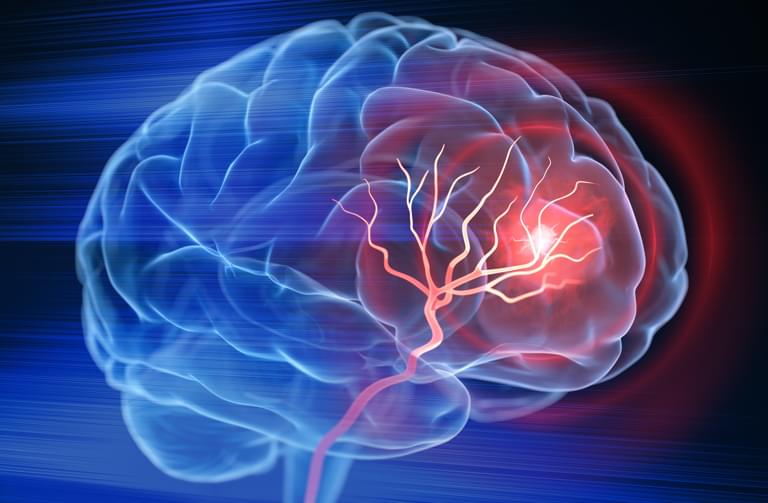New research suggests that black holes may actually be “frozen stars,” bizarre quantum objects that lack a singularity and an event horizon, potentially solving some of the biggest paradoxes in black hole physics.



Humans have been trying to cheat death for thousands of years. Myths about elixirs promising immortality span various cultures, as do real concoctions that often did more harm than good. One of the most misguided attempts at creating a potion for immortality involved the first emperor of China and mercury pills. In his obsession with finding a formula that would grant him eternal life, Qin Shi Huang downed mercury and other toxic substances nearly two millennia ago, believing his alchemists had hit upon the perfect magical tonic. Unsurprisingly, he died prematurely at age 49.
Archeologists have discovered another 2,000-year-old “elixir for immortality” that sheds light on the true cost of chasing down eternal life.
While excavating the tomb of a Western Han noble family in China’s Henan province in 2018, researchers unearthed a bronze pot. At first, the team thought the liquid inside was wine, but more recently determined that it was an alchemist’s formulation: a yellow liquid containing potassium nitrate and alunite. These two ingredients are cited in ancient Taoist texts as ingredients for immortality. Potassium nitrate is an inorganic salt used today as a natural source of nitrate, and is a useful ingredient in food preservatives, fertilizer, and fireworks. Alunite is a mineral that forms in volcanic or sedimentary environments when sulfur-rich minerals oxidize. It has historically been used to make alum, which is important for water purification, tanning, and dyeing.

Episode · The Joy of Why · Nothing escapes a black hole… or does it? In the 1970s, Stephen Hawking described a subtle process by which black holes can “evaporate,” with some particles evading gravitational oblivion. This phenomenon, now dubbed “Hawking radiation,” seems inherently at odds with general relativity, but it gets weirder still: If particles can escape, do they preserve some information about the matter that was obliterated? Leonard Susskind, a physicist at Stanford University, found himself at odds with Hawking when it came to answering this question. In this episode, co-host Janna Levin speaks with Susskind about the “black hole war” that ensued and the powerful scientific lessons that have radiated from one of the most famous paradoxes in physics.
“I estimate that 80% of 80% of all jobs, maybe more, can be done by an AI,” famed investor and entrepreneur Vinod Khosla has warned. “Be it primary care doctors, psychiatrists, sales people, oncologists, farm workers or assembly line workers, structural engineers, chip designers, you name it.”
Say hello to a universal income and a 3-day week.



Scientists have developed microscopic robots capable of treating brain aneurysms with unprecedented precision, offering a potential alternative to invasive brain surgeries. An international team, including researchers from the University of Edinburgh, engineered these nanorobots to safely and accurately deliver life-saving medications to the brain. This advancement comes in the context of a global health challenge, […].


Several years ago, MIT researchers showed that administering a series of escalating doses of an HIV vaccine over a two-week period could help overcome a part of that challenge by generating larger quantities of neutralizing antibodies. However, a multidose vaccine regimen administered over a short time is not practical for mass vaccination campaigns.
In a new study, the researchers have now found that they can achieve a similar immune response with just two doses, given one week apart. The first dose, which is much smaller, prepares the immune system to respond more powerfully to the second, larger dose.

Can an exoplanet’s atmosphere exhibit east-west asymmetry, meaning its two edges are vastly different from each other? This is what a recent study published in Nature Astronomy hopes to address as an international team of researchers led by the University of Arizona investigated the atmosphere of WASP-107 b, which is a Jupiter-sized exoplanet located approximately 211 light-years from Earth. This study holds the potential to help astronomers better understand the formation and evolution of exoplanets and how we can hopefully find Earth-like exoplanets, as well.
“This is the first time the east-west asymmetry of any exoplanet has ever been observed as it transits its star, from space,” said Matthew Murphy, who is a graduate student at the University of Arizona Steward Observatory and lead author of the study. “I think observations made from space have a lot of different advantages versus observations that are made from the ground.”
For the study, the researchers used NASA’s powerful James Webb Space Telescope (JWST) to observe the atmosphere of WASP-107 b, which is tidally locked to its parent star, meaning one side is always facing its parent star, much like how our Moon always has one side facing the Earth. This also makes studying an exoplanet’s atmosphere tricky since astronomers can only observe the back side of the exoplanet and analyzing the starlight passing through its atmosphere. However, with the help of novel methods, the researchers were able to analyze data obtained from the front side of WASP-107 b, thus confirming its atmospheric east-west asymmetry. Additionally, WASP-107 b also exhibits low density and low gravity, resulting in its atmosphere being inflated.